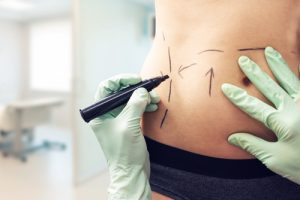 If you have recently undergone eyelid surgery, you may be wondering about the recovery process and what to expect in the days and weeks following the procedure. While every individual’s experience may vary, there are some common questions that many people have during this time. In this blog post, we will address some of the most frequently asked questions about eyelid surgery recovery to help put your mind at ease and guide you through getting back to normal. Board-certified plastic surgeon Dr. Matthias Solomon provides eyelid surgery to patients in Dallas, Frisco, Sherman, Texas, and surrounding locations.
If you have recently undergone eyelid surgery, you may be wondering about the recovery process and what to expect in the days and weeks following the procedure. While every individual’s experience may vary, there are some common questions that many people have during this time. In this blog post, we will address some of the most frequently asked questions about eyelid surgery recovery to help put your mind at ease and guide you through getting back to normal. Board-certified plastic surgeon Dr. Matthias Solomon provides eyelid surgery to patients in Dallas, Frisco, Sherman, Texas, and surrounding locations.
Understanding the Basics of Eyelid Surgery Recovery
Eyelid surgery, also known as blepharoplasty, is a common procedure that aims to rejuvenate the appearance of the eyelids. During the recovery process, it’s important to understand the basics to ensure a smooth healing process. Following surgery, you may experience swelling, bruising, and discomfort. It’s crucial to take proper care of your incisions, keep the area clean, and avoid any strenuous activities that may interfere with the healing process. Additionally, it’s essential to follow your surgeon’s post-operative instructions, which may include the use of cold compresses, prescribed medications, and keeping your head elevated while resting. By understanding these basics, you can help promote a speedy and successful recovery after eyelid surgery.
Common Concerns and Questions about Post-Surgery Care
After undergoing eyelid surgery, it’s common to have concerns and questions about post-surgery care. One common concern is the appearance of swelling and bruising. Rest assured that this is a normal part of the healing process and should gradually improve over time. Other common questions include when it is safe to wear makeup again and when normal activities can be resumed. Your surgeon will provide specific guidelines tailored to your individual case, but generally, it is best to wait a few weeks before wearing makeup and to avoid strenuous activities for a while. Remember to follow your surgeon’s instructions and don’t hesitate to reach out with any concerns or questions you may have.
Tips and Best Practices for Speedy and Successful Recovery
During the recovery period after eyelid surgery, there are some tips and best practices you can follow to help ensure a speedy and successful healing process. Firstly, it’s crucial to take proper care of your incisions by keeping them clean and following any specific instructions given by your surgeon. Using cold compresses as directed can help reduce swelling and bruising. It’s also important to avoid strenuous activities that could disrupt the healing process. Taking it easy and giving yourself time to rest is essential. Additionally, maintaining a healthy diet and staying hydrated can aid in the recovery process. By following these tips and best practices, you can optimize your recovery after eyelid surgery.
The Role of Follow-Up Appointments in Eyelid Surgery Recovery
Follow-up appointments play a vital role in your eyelid surgery recovery. These appointments allow your surgeon to monitor your progress and address any concerns or issues that may arise. During these visits, your surgeon will assess your healing process, check the incisions, and ensure that everything is progressing as expected. They will also provide you with additional guidance and recommendations for post-operative care. These appointments are an opportunity for you to ask any questions or discuss any lingering concerns you may have. By attending your follow-up appointments, you can ensure that you are on track for a successful recovery and address any issues promptly.
Long-term Care and Expectations After Eyelid Surgery
Once you have successfully recovered from your eyelid surgery, it’s important to keep in mind that there is still long-term care and expectations to consider. While the initial recovery period may have passed, it’s crucial to continue taking care of your eyelids to maintain the results of the surgery. This includes following a skincare routine specifically tailored to your needs, avoiding excessive sun exposure, and adopting a healthy lifestyle that includes a balanced diet and regular exercise. It’s also important to manage your expectations and understand that the results of eyelid surgery can vary from person to person. It’s best to discuss any concerns or questions with your surgeon to ensure you have realistic expectations and know how to care for your eyelids in the long run.
Schedule a Consultation with Frisco, Texas Plastic Surgeon Dr. Solomon
For more information on Plastic Surgery and Non-Surgical Medical Spa Procedures and Treatments in Frisco, Texas, please contact the offices of Board Certified Plastic Surgeon Dr. Matthias Solomon by clicking here or calling 214-983-0213.
Serving patients in Frisco, Dallas, McKinney, Plano, Sherman, Highland park, University Park, Preston Hollow, Prosper, Allen, Southlake, Denton, Irving, Flower mound, Little Elm, Fort Worth, Texas and surrounding areas.


 Do you feel like your arms have lost their shape and tone over the years? If so, you may be considering a brachioplasty procedure to get rid of excess fat and skin. A brachioplasty is a plastic surgery procedure that can help restore the upper arms to a more youthful and contoured appearance. Before making any decisions, it is important to understand what is involved in the procedure and to find a qualified plastic surgeon who can answer all of your questions. In this blog post, we will provide an overview of brachioplasty and the steps you need to take to achieve your desired results. Board certified plastic surgeon
Do you feel like your arms have lost their shape and tone over the years? If so, you may be considering a brachioplasty procedure to get rid of excess fat and skin. A brachioplasty is a plastic surgery procedure that can help restore the upper arms to a more youthful and contoured appearance. Before making any decisions, it is important to understand what is involved in the procedure and to find a qualified plastic surgeon who can answer all of your questions. In this blog post, we will provide an overview of brachioplasty and the steps you need to take to achieve your desired results. Board certified plastic surgeon  If you’ve recently had a
If you’ve recently had a  It’s natural to want to look and feel your best, and facial rejuvenation can be a great way to do just that. A
It’s natural to want to look and feel your best, and facial rejuvenation can be a great way to do just that. A  When considering undergoing
When considering undergoing  After undergoing an
After undergoing an 






